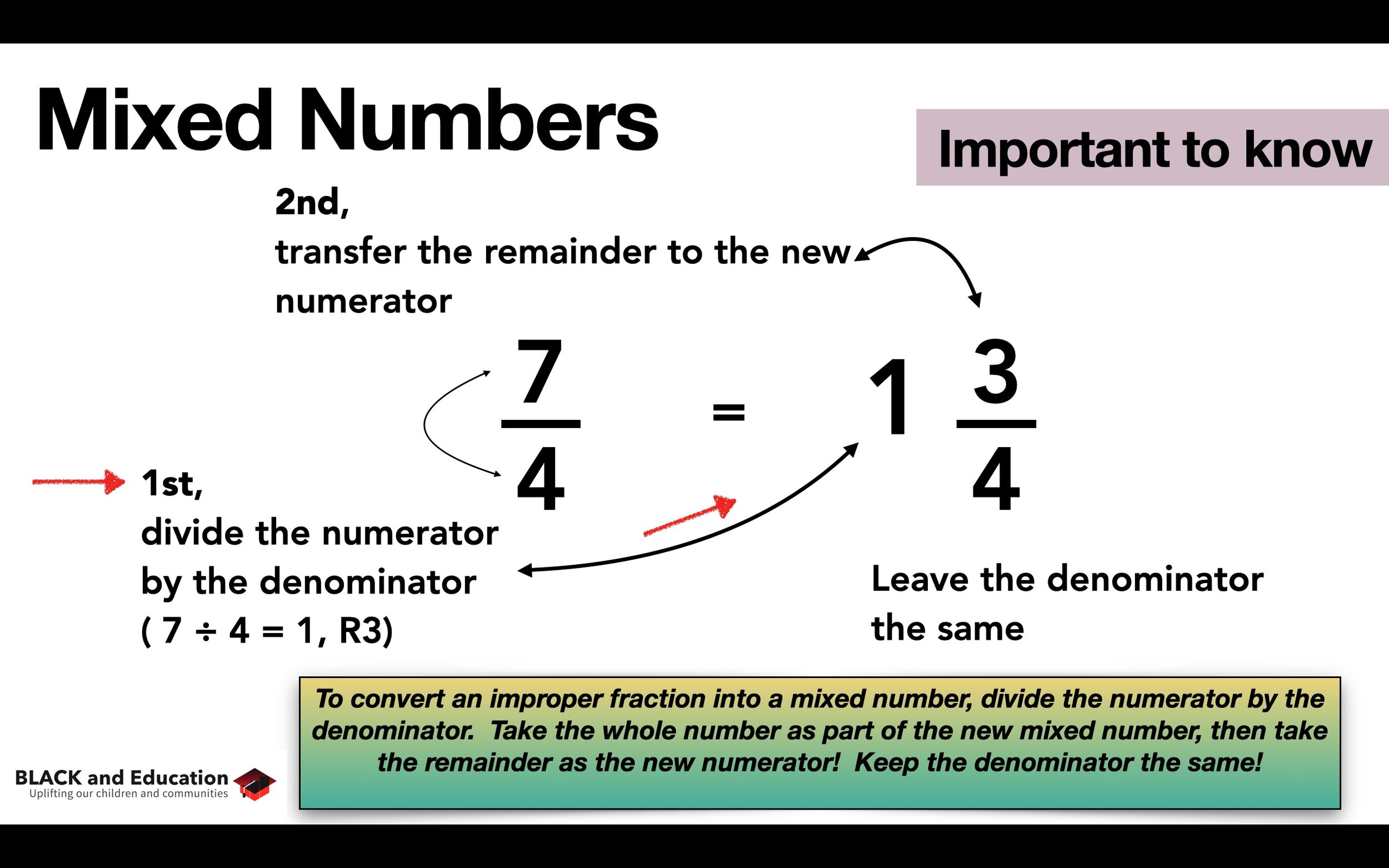Mixed Numbers and Improper Fractions
If you have ever gone to the store with a $1.50 or gotten back $5.76 in changes, then you know that there is a possibility for there to be numbers that have a whole part to them, like $1, and a fraction of a whole, like $0.50. It is possible for a number to be made up of both whole numbers and fractions of numbers.
An improper fraction is a fraction that has a numerator that’s bigger than its denominator. If you think about it, there’s one thing you need to remember:
Fractions are really about division
So, if you look at the number above, 7/4 I am not just saying seven fourths, I am also saying 7 ÷ 4.
If you remember our example from long division, we can see that four goes into 7, one time, with a remainder of 3.
The above long division problem is the same as 7/4. So, 7/4 has 1 whole number in it—1, and a fraction in that turns out to be 3/4.
We can see that when we convert this improper fraction into a mixed number.
A mixed number is just what you think, a number with a mix of a whole number and a fraction. If we want to take 7/4, above, and convert it into its mixed number, we would divide 4 into 7—it goes 1 whole time.
Then we take what’s left over the remainder of 3, and make that the new numerator and finally, take the same denominator and use it in the mixed number. Our answer would be 1 and 3/4
1 3/4 = 7/4
So, you divide to help convert an improper fraction to a mixed number.
To do the opposite, convert a mixed number into an improper fraction, involves multiplication (which is the opposite of division).
Converting 1 3/4 to it improper fraction (7/4), involves multiplying the whole number by the denominator (which gives us 4 in this case) then adding the numerator (3) to it, which gives us 7. This becomes our new numerator and the denominator stays the same - the answer: 1 3/4 = 7/4.
Let’s look at another example.
If we wanted to convert the improper fraction 29/5 to a mixed number we would:
Divide 29 by 5
Get an answer of 5 as the whole number (because 5 * 5 = 25, so 5 goes into 29, 5 times, with a remainder of 4)
The remainder of 4 become the new numerator and 5 stays as the denominator
You will need to get more practice with these techniques and concepts, because they will not go away…they will lead into decimals and percentages and beyond.
Summary
An improper fraction is a fraction whose numerator is larger than its denominator (it has a whole part and a fractional part to it).
A mixed number is another way of writing an improper fraction so it, too, has a whole part and a fractional part to it, you just show those parts.
To convert an improper fraction into a mixed number, you just divide the numerator by the denominator and take the remainder as the new numerator…leaving the denominator the same.
To convert a mixed number into an improper fraction, you multiply the whole number by the denominator and add the numerator—this becomes the new numerator and you leave the denominator the same.





